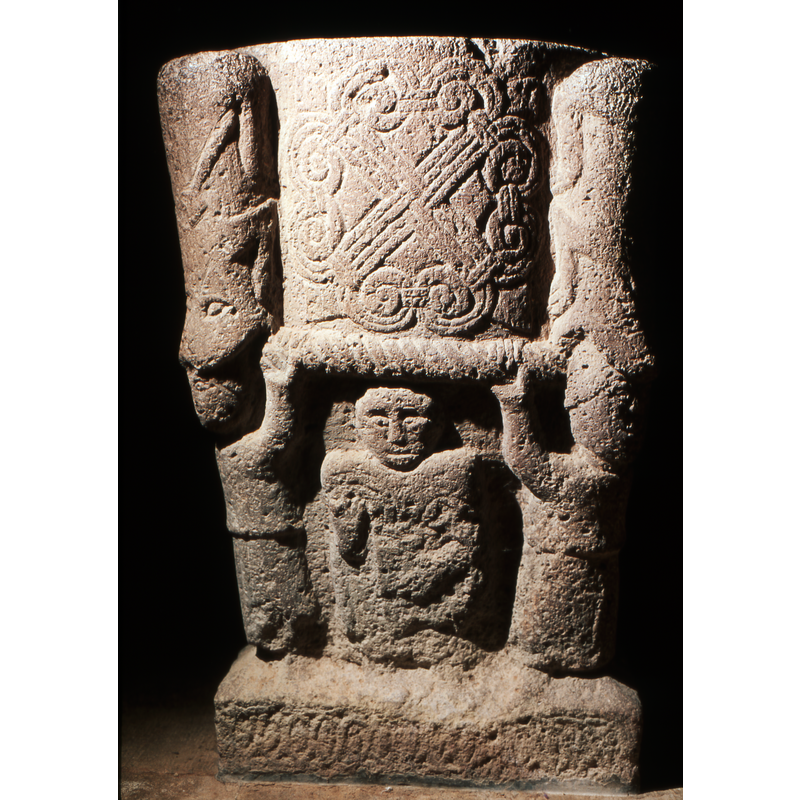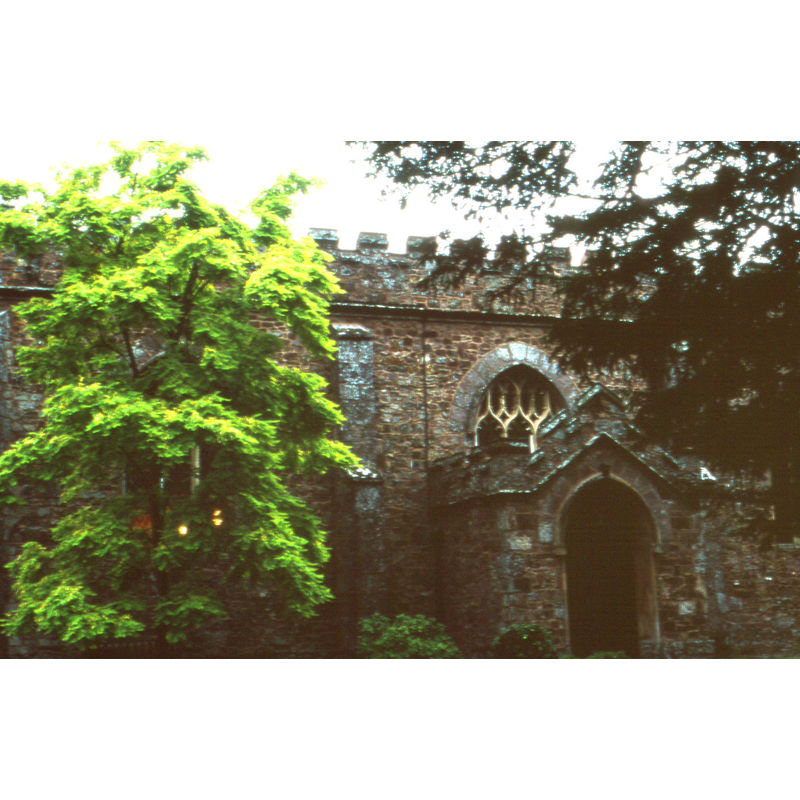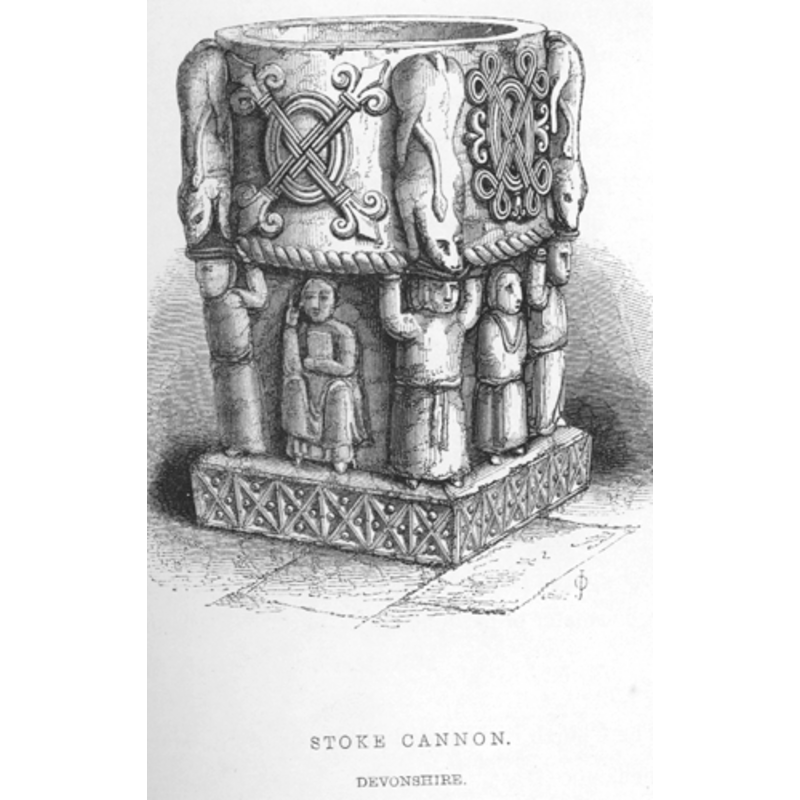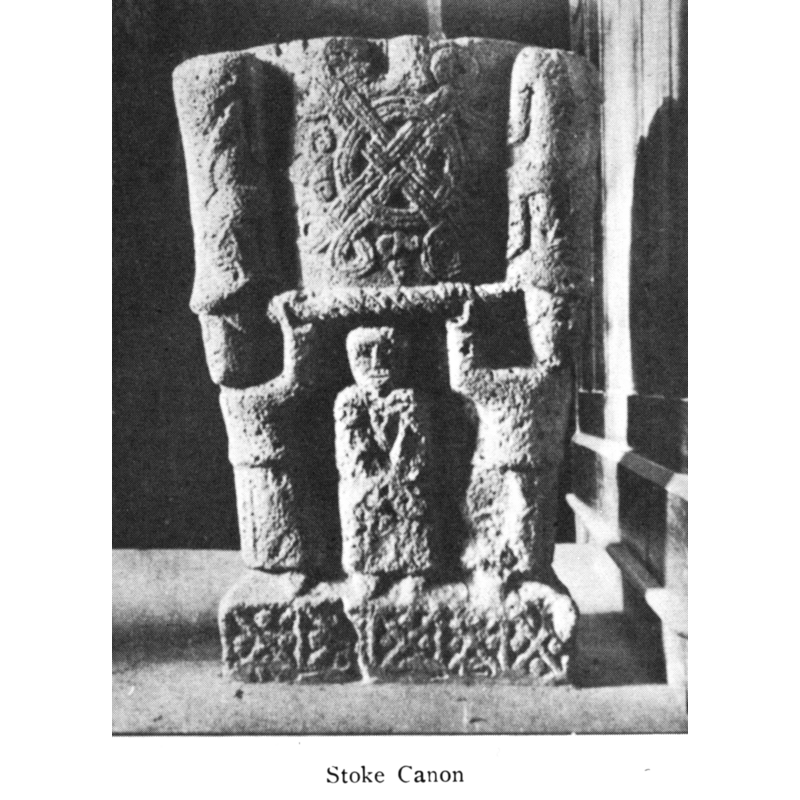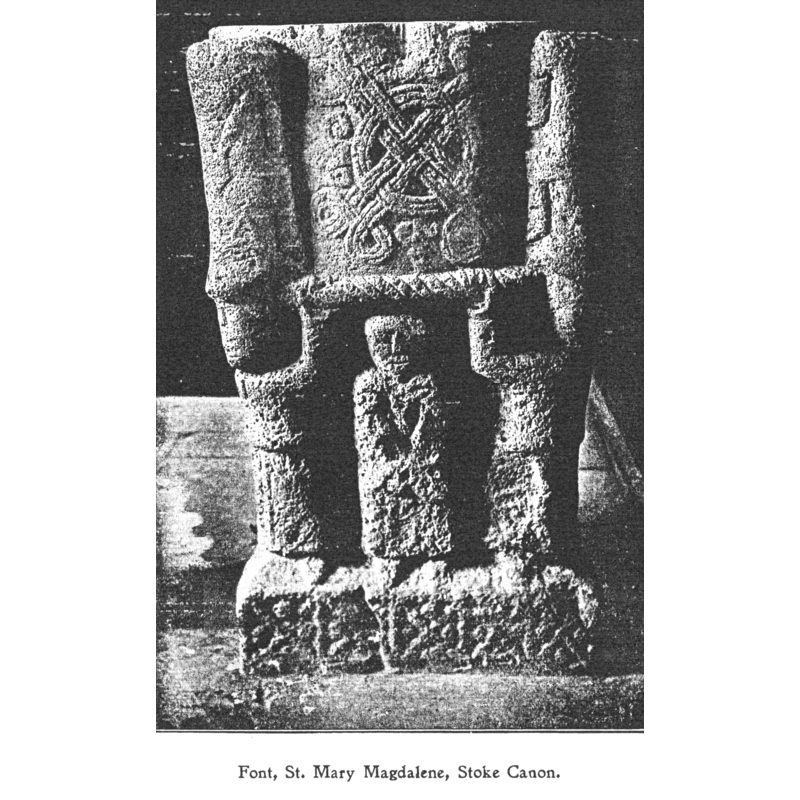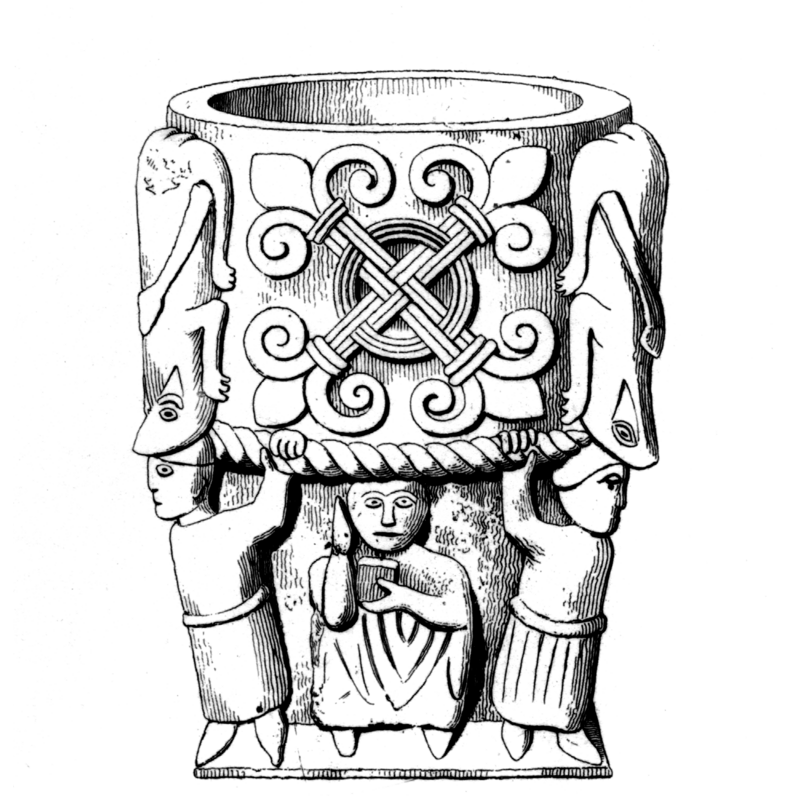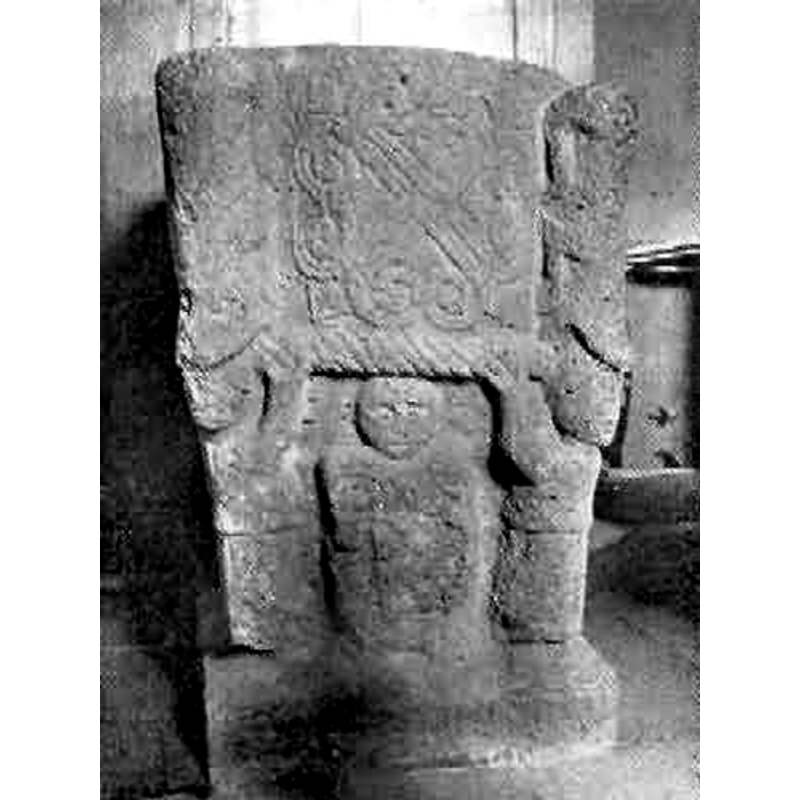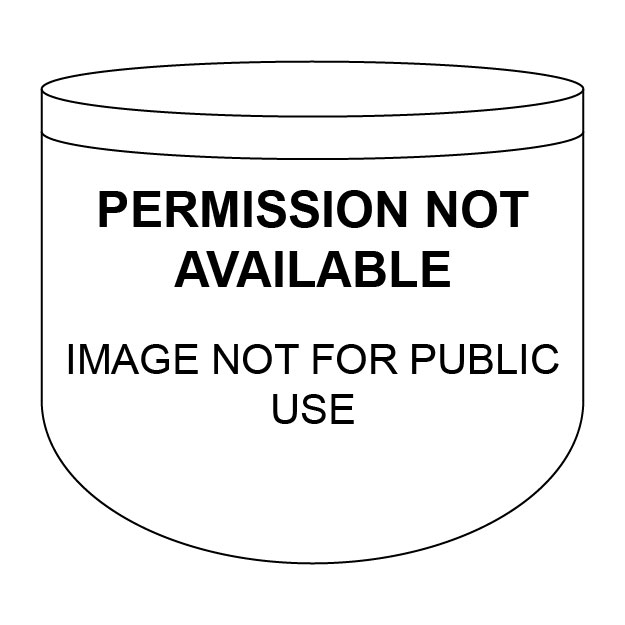Stoke Canon / Stoche / Stoke Cannon

Image copyright © Baptisteria Sacra Index, 2023
Results: 24 records
B01: design element - motifs - circle and X (cross - saltire?)
B02: design element - motifs - circle and X (cross - saltire?)
B03: design element - motifs - circle and X (cross - saltire?)
B04: design element - motifs - circle and X (cross - saltire?)
BBL01: design element - motifs - rope moulding
BF01: animal - fabulous animal or monster - devouring human head - animal mask?
BF02: human figure - lame - standing - holding club
BF03: animal - fabulous animal or monster - devouring human head - animal mask?
Scene Description: south-east corner: one of four figures supporting the bowl. Crouching animal above the figure devouring the head - like a mask or helmet? -- Photographed in July 1998
Copyright Statement: Image copyright © Baptisteria Sacra Index, 2023
Image Source: digital image of a 27 July 1998 photograph by BSI
BF04: animal - fabulous animal or monster - devouring human head - animal mask?
LB01: design element - patterns - diamond or lozenge
LBS01: cleric - priest - with book - giving sign of benediction
LBS02: Old Testament - Story of Moses - Exodus - pilgrim? - bishop?
LBS03: cleric - priest? - giving sign of benediction
LBS04: Virgin Mary - Madonna and Christ-child?
view of church exterior - detail
view of font
view of font
view of font
view of font
view of font
view of font - east side
view of font - east side
view of font - south side
INFORMATION
FontID: 00294STO
Object Type: Baptismal Font1
Church/Chapel: Parish Church of St. Mary Magdalen
Church Patron Saints: St. Mary Magdalene
Church Location: Stoke Canon, Exeter EX5 4AS, United Kingdom -- Tel.: +44 1392 759612
Country Name: England
Location: Devon, South West
Directions to Site: Located off the A396, between Exeter and Tiverton, 8 km N of Exeter
Ecclesiastic Region: Diocese of Exeter
Historical Region: Hundred of Wonford [in Domesday]
Font Location in Church: Inside the church
Date: ca. 1170 [Carlsson]
Century and Period: 12th century, Norman
Cognate Fonts: [one of the fragments kept in Exeter St David's may have been from a similar font as this one]
Credit and Acknowledgements: We are grateful to Dr. Roger Peters, of www.wissensdrang.com, for his permission to use the transcription of and images from Stabb (1908)]. [We are also grateful to the Thomas Fisher Rare Books Library for access to the copy of Lysons’ Magna Britannia, and to Jim Ingram, of the Preservation Services, Robarts Library, for the digital imaging of Lysons’ illustrations]
Font Notes:
Click to view
There is an entry for Stoke [Canon] [variant spelling] in the Domesday survey [https://opendomesday.org/place/SX9398/stoke-canon/] [accessed 12 January 2023]; it mentions neither cleric nor church in it. Noted and illustrated in Lysons (1806-1833) as a baptismal font with "figures and animals of very coarse workmanship." In Paley (1844). Lewis' Dictionary of 1848 reports: "the font is an object of great interest, supposed by antiquaries to be at least 700 years old". Barnes (1891) notes that this font [Branes uses spelling 'Stoke Cannon'] shares characteristics with the one at Toller Fratrum, and argues for a Saxon pedigree and a date near the 8th century. Listed in Cox & Harvey (1907) as a baptismal font of the Norman period. Studied in Clarke (1907) and (1913), who contests Bond's argument [cf. infra] about the shape of the font, and argues -rather unconvincingly- that "the sculptor set out to carve a circular tub, but he wanted to make the best of his block of lava, and designed the outline so as to waste as little as possible." Described and illustrated in Bond (1908) as one of "a set of sculptured fonts which have been credited with undue antiquity, owing to the rudeness or uncouthness of their ornament; but it by no means follows that what is archaic is always ancient". Bond (ibid., p. 143) dates these fonts to the 12th century and argues (ibid.) that the elaborate ornamentation is a survival "of Anglo-Saxon or Celtic traditions of design", and that this font design owes to the central-cylinder-and-four-outer-shafts type of support, a type, Bond adds (ibid.), "hardly appears before the middle of the twelfth century." Noted and illustrated in Stabb (1908). Illustrated in Needham (1944). Noted in Pevsner (1952): "Norman of the most elementary. On the pillar four figures and four caryatid figures between them holding the bowl on their angularly raised arms.From the bowl four beasts crouch down to bite off their heads." Drake (2003) identifies the "X" motif as a saltire. On-site notes: a figure at each of four corners of the base is threatened by an animal's mouth leaning from the basin corners [a reference to animal masks used?]. Various interlacing motifs are carved on the four sides of the basin. The sides of the base depict four figures, one on each side, between the corner figures described above. On the north side the figure is holding a book and has his right hand raised in benediction: a cleric. The figure with the staff on the western end has been suggested as Moses, a pilgrim or a bishop [by Clarke, for instance], although it really looks like a man with a thick club. The figures on the south and eastern sides are more difficult to identify (the east side may be a Madonna and Child) [Paley (1844) refuses to attempt an identification on account of the mutilation they have suffered]. There is no lead lining, but the basin well has a central drain. The font is cut in one-piece including the lower base or plinth which bears a decorative band of diamond [saltire?] motif all around. Tyrrell-Green (1928) describes its carving as "remarkable for boldness of design, but the rudeness of its execution and the rough usage it has been subjected to render it difficult to give a meaning to the figures". [NB: on-site notes aided by information from the pamphlet containing a short history of the church and written by Gillian and John Piper]. [NB: cf. Index entry for Exeter No. 5, St David's, for a fragment of a font possibly of the same design, period and material].
COORDINATES
Church Latitude & Longitude Decimal: 50.772, -3.50525
Church Latitude & Longitude DMS: 50° 46′ 19.2″ N, 3° 30′ 18.9″ W
UTM: 30U 464373 5624593
MEDIUM AND MEASUREMENTS
Material: stone, coarse volcanic stone (Thorverton trapdyke)
Number of Pieces: one
Font Shape: bucket-shaped (mounted)
Basin Interior Shape: round
Basin Exterior Shape: round
Drainage Notes: no lining
Rim Thickness: 6 cm*
Diameter (inside rim): 53 cm* / 52.5 x 37.5 cm**
Diameter (includes rim): 66 cm* / 65 cm**
Basin Depth: 25 cm* / 26.25 cm**
Basin Total Height: 42 cm* (including cable)
Height of Base: 55 cm*
Font Height (less Plinth): 97 cm* / 95 cm**
Font Height (with Plinth): 105 cm*
Square Base Dimensions: 54 x 57 cm*
Notes on Measurements: * BSI on site / ** given in inches in Clarke (1913: 329)]
LID INFORMATION
Date: dated 1909
Material: wood
Apparatus: no
Notes: low octagonal pyramid, patterned sides; obelisk-like finial; odd; modern
REFERENCES
Barnes, W. Miles, "A brief historical & descriptive sketch of the churches in the rural deanery of Dorchester (Dorchester portion)", XII, Proceedings of the Dorset Natural History and Archaeological Society, 1891, pp. [36]-70; p. 46-47
Bond, Francis, Fonts and Font Covers, London: Waterstone, 1985 c1908
Carlsson, Frans, The Iconology of Tectonics in Romanesque Art, Hässleholm: AM-Tryck, 1976
Clarke, Kate M., "The baptismal fonts of Devon -- Part I", 45, Report and Transactions of the Devonshire Association for the Advancement of Science, Literature and Art, 1913, pp. 314-329; p. 325-326, 329
Clarke, Kate M., "The symbolism of the ancient fonts of Stoke Canon, St Mary Church and Alphington", IV:V (1907), Devon and Cornwall Notes & Queries, 1907, pp. 129-139 and plates; p. 129-139
Cox, John Charles, English Church Furniture, New York: E.P. Dutton & Co., 1907
Drake, Colin Stuart, "Romanesque Fonts in Kent: the French Connections", CXXIII, 2003, Archaeologia Cantiana, 2003, pp. 333-352; p. 341 and pl. VI
Drake, Colin Stuart, The Romanesque Fonts of Northern Europe and Scandinavia, Woodbridge, Suffolk: Boydell Press, 2002
Kroesen, Justin E.A., The Interior of the medieval village church = Het middeleeuwse Dorpskerkinterieur, Leuven: Uitgeverij Peeters, 2004
Lewis, Samuel, A Topographical Dictionary of England, Comprising the Several Counties, Cities, Boroughs, Corporate and Market Towns, Parishes, Chapelries, and Townships, and the Islands of Guernsy, Jersey, and Man, with Historical and Statistical Descriptions [...], London: S. Lewis, 1831
Lysons, Daniel, Magna Britannia, being a concise topographical account of the several counties of Great Britain, London: Printed for T. Cadell and W. Davies, 1806-1822
Neeham, Albert, How to study an old church, London: Batsford, 1944
Paley, Frederick Apthorp, Illustrations of Baptismal Fonts, London, UK: John van Voorst, 1844
Pevsner, Nikolaus, South Devon, Harmondsworth: Penguin Books, 1952
Stabb, John, Some old Devon churches, their roods, pulpits, fonts, etc., London: Simkin, [et al.], 1908-1916
Tyrrell-Green, E., Baptismal Fonts Classified and Illustrated, London: Society for Promoting Christian Knowledge: The Macmillan Co., 1928
Wood, Rita, "Real People in English Romanesque Sculpture", Summer 1999, 11, Medieval Life: The Magazine of the Middle Ages, 1999, pp. [8]-15; p. 13

